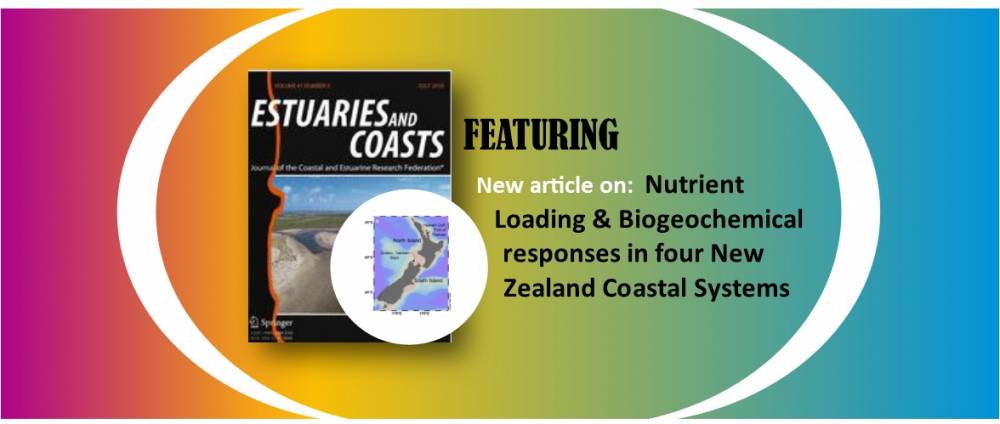Balance of Catchment and Offshore Nutrient Loading and Biogeochemical Response in Four New Zealand Coastal Systems: Implications for Resource Management
 Published in: Estuaries and Coasts | Springer US | Volume 41/2018 | ISSN: 1559-2723 (Print) 1559-2731 (Online)
Published in: Estuaries and Coasts | Springer US | Volume 41/2018 | ISSN: 1559-2723 (Print) 1559-2731 (Online)
Authors:
John R. Zeldis | National Institute of Water and Atmopheric Research, Christchurch, New Zealand
Dennis P. Swaney | Department of Ecology and Evolutionary Biology, Cornell University, New York, USA
The Land Ocean Interactions in the Coastal Zone (LOICZ) program (now Future Earth – Coasts) first attempted to create a simple methodology to assess biogeochemical budgets of coastal water bodies and their implications for coastal ecosystem metabolism in the 1990s (Gordon et al., 1996). An original goal of LOICZ was to evaluate the global significance and regional variation of ecosystem metabolism of coastal waters, especially along the coastlines of developing countries.
Toward this end, methods were developed with parsimonious data requirements because of limitations on data available to characterize coastal systems in these under-resourced regions. The integrative approach has remained popular, and has been used more recently in educational and management applications, providing simple frameworks for using data to assess the linkages between human activities, the associated nutrient loads to coastal ecosystems, and their impact on their water quality and ecosystem metabolism.
This paper by Zeldis and Swaney represents an application to New Zealand bays aimed at helping managers determine the dominant drivers of water quality in these systems.
Abstract: Nutrient mass balance analyses are a way of obtaining ‘whole system’ viewpoints on coastal biogeochemical functions and their forcing. Seasonal mass balances are presented for four large bay systems in New Zealand (NZ), with the aim of showing how they can inform coastal management. Freshwater volumes, and surface and groundwater, wastewater and atmospheric inorganic and organic nitrogen (N) and phosphorus (P) were balanced with levels of salinity, N and P from ocean surveys, used to determine non-conservative N and P fluxes and, via stoichiometry, carbon (C) fluxes.
For Golden and Tasman Bays and Hauraki Gulf, exchange with adjacent shelf waters usually dominated total N supply (80–85%). In contrast, for the Firth of Thames, 51% of total N and 85% of dissolved inorganic N supply originated from its agricultural catchment. Net ecosystem metabolism (NEM; balance of autotrophy and heterotrophy) of Golden and Tasman Bays and Hauraki Gulf was usually nearly balanced. In contrast, Firth NEM was highly seasonally variable, often exhibiting strong heterotrophy coincident with expression of respiration-related stressors (low O2 and high DIC/low pH). Denitrification accounted for about 51% of total N export across the four systems, signifying its importance as a eutrophication-regulating ecosystem service.
Budgets made 12 years apart in the Firth showed decreased denitrification efficiency, coincident with large increases in system N and phytoplankton. The findings for land-ocean nutrient balance, NEM and denitrification showed how mass balance budgeting can inform coastal management, including inventories of nutrient inputs, balances of oceanic and terrestrial nutrient loading, and potential for risk associated with biogeochemical responses.
Keywords: Coastal nutrient budgets | Nutrient loading | Net ecosystem metabolism | Denitrification | Resource management | New Zealand
Read the full article here.

